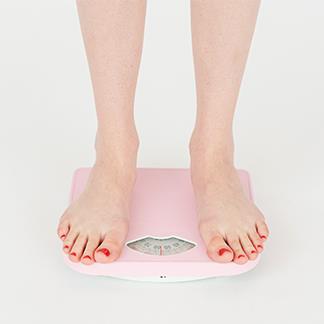Get 12% Off*, Use Code: HPNY26
Get 12% Off*, Use Code: HPNY26

We are bombarded with images of what is considered healthy body images. Should this be the end all be all of what is considered your ideal weight? More than likely, what we see in magazines and on television is completely unattainable and incorrect. While it is correct that the more weight, we carry the higher the risk of negative health effects, there is no one-size-fits-all solution for everyone. So how do we figure out what is right for each of us individually? We here at HPFY can give you a little insight into what might be your ideal weight or body type.

Who hasn’t felt the dread before standing on the bathroom scale? This is only one number in determining what is your ideal weight. When considering your ideal weight, you should look at your BMI (Body Mass Index) and WHR (Waist-Hips Ratio). These two measurements are:
Also known as BMI, this measurement is derived from the height and weight of a person. This is calculated by dividing a person’s weight by the square of their height. This is often done in kilograms and meters, respectively. You can use the link below to calculate your ideal body mass index from the Centers for Disease Control (CDC) website. A high BMI can be an indicator of high body fat but should be used as a screening tool and not a diagnostic tool of body fatness and overall health.
This can also be known as WHR and determines how much fat may be stored in your hips, waist, and buttocks. This is determined by figuring out the ratio of your waist circumference to your hip’s circumference. When we carry more excess fat in our body there can be increased risk of heart disease, obesity, and type II diabetes. According to the World Health Organization (WHO), a healthy waist to hip ratio is less than 0.9 in men and 0.85 for women. See the chart below:

To measure your WHR, use a tape measure to determine the circumference at your smallest part of your waist (just above the belly button). This will be your waist circumference. Then measure the distance around the largest part of your hips (usually around the buttocks) for your hip circumference. Divide your waist circumference by your hip circumference and you have your waist to hip ratio.
Utilizing your Body Mass Index or Waist to Hip Ratio is a good guideline for determining how much extra fat you may be carrying, but are there other methods or tools that can help you determine if you are carrying too much body fat? Fortunately, there are, and they include:
Measuring excess body fat can help you and your doctor come up with a plan to keep you healthy and in a proper body mass/ratio for you. Keeping an eye on your body mass index or waist to hip ratio is a great idea especially this time of year. The holidays have a penchant for adding a little extra to us every year. Be proactive and stay healthy!!
Health Products For You offers a huge collection of body fat scales that can be a great tool to measure different aspects of body composition and keep a tab on your weight. HPFY has been online since 2002 to aid its clientele in being healthy and happy. Shop today and get huge discounts on each buy. Order today!
Disclaimer: All content found on our website, including images, videos, infographics, and text were created solely for informational purposes. Our content should never be used for the purpose of diagnosis or treatment of any medical conditions. Content shared on our websites is not meant to be used as a substitute for advice from a certified medical professional. Reliance on the information provided on our website as a basis for patient treatment is solely at your own risk. We urge all our customers to always consult a physician or a certified medical professional before trying or using a new medical product.

Kevin Cleary has been a Health Products For You contributor for many years and has a degree in marketing. His health and wellness journey has a very personal meaning and has guided him in his content writing for HPFY.
In 2006, ...
How To Increase Iron Levels Quickly
It’s a question that must have puzzled you like many others. Iron is essential in hemoglobin production and its inadequate levels can negatively impact your health. Dive into this informative article to explore top iron-rich foods that can help you fight iron deficiency.
10 Best Coccyx Cushions for Tailbone Pain
If you're like most people, you spend about 8 to 10 hours sitting every day. However unhealthy, it is part of life for many, and can cause tailbone pain. Coccyx cushions can help alleviate this pain. Click to read more and find the perfect coccyx cushion for your tailbone pain.
5+ Best Adult Diapers for Fecal Incontinence
Dealing with fecal incontinence can be challenging, but you're not alone. Read this article and navigate through discreet and effective solutions that help you manage fecal incontinence and let you live life on your terms with confidence and comfort.
Top 5 Best Reviewed Nebulizers of 2024
Need an effective and affordable nebulizer? Look no further, in this article we offer 5 of our best reviewed nebulizers that are loved by our customers. Click to read more and find the perfect nebulizer for all your respiratory needs.
10 Best Penis Pumps For Erectile Dysfunction
For anyone dealing with erectile dysfunction, penis pumps serve as a great way to manage it. But with so many products available, determining the best one for your needs can be challenging. To assist you in refining your choices and making an informed decision, here are our top 10 options, recognized for their effectiveness and safety.